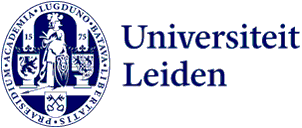
Parenting choices and parenting styles important in transmission of extremist views within families
Do children growing up in a jihadist or right-wing extremist household develop the same extremist views as their parents? That depends in part on broader parenting choices and parenting styles, according to research by the Institute of Security and Global Affairs (ISGA).
Back in 2019, the National Coordinator for Counterterrorism and Security warned about the potential danger posed by children growing up in jihadist or right-wing extremist circles. The fear was that these children might follow in their parents' footsteps. Layla van Wieringen, Daan Weggemans and Marieke Liem launched the study ‘De integenerationele overdracht van extremisme’ (Dutch) to find out how these children might be exposed to extremist views in their upbringing.
Lead researcher Van Wieringen: 'In 2021, we already researched how extremist parents influence their children, by mapping the literature on the intergenerational transmission of extremist views. In the current study, we also collected data ourselves, through interviews with (former) extremist parents and their adult children, interviews with experts and professionals, and file research. It is a first attempt to look behind the front door of extremist families.’
The dimensions 'Transmission' and 'Parenting'
The research shows that extremist transmission mechanisms cannot be separated from the family narratives, parenting styles, and role patterns that parents have internalised. Specifically, three overlapping dimensions are important: Transmission, Parenting, and Parenthood.
'Secure, loving parenting may encourage children to eventually break away from extremist family ideology.'
Van Wieringen: ‘‘Transmission’ is about how parents try to actively transmit their views to their children. For example, social isolation, extremist language and parental control of the media play an important role. 'Parenting' is about the broader context in which children grow up, for example whether parents are warm and involved or distant and cool towards their children. These kinds of parenting styles can unintentionally influence the transmission of extremism'.
Children growing up in unstable family environments (where there is abuse or neglect, for example) may develop unsafe attachment styles. This may make them more susceptible to their parents' extremist views. In other cases, extremist parents actually turn out to be lovingly involved with their children. Such secure parenting can help children develop their own positive identity. This may encourage them to eventually break away from extremist family ideology.
The dimension ‘Parenthood’
Van Wieringen: ‘Finally, the ‘Parenthood’ dimension refers to the beliefs and assumptions underlying these parenting choices. Think of the way parents see themselves; the meaning they attach to (extremist) parenthood; and the way these beliefs then filter through to their role as a father or mother.'
For instance, the research shows that within extremist milieus, there is often a distinct view of how parents should raise their children. Children are often seen as the next generation of 'warriors', and thus the future carriers of extremist ideology. The extent to which parents support these ideas can influence the parenting choices they make.
'Stigmatisation and exclusion likely encourages intergenerational transmission.'
Reactions from the outside world
The researchers stress that the intergenerational transmission of extremist views is a complex phenomenon involving not only parents, but also children themselves and reactions from the outside world. Van Wieringen: ‘When extremist families are stigmatised or excluded, this is likely to encourage intergenerational transmission. It is therefore crucial to counter social isolation and encourage contact with dissenters in these families. In addition, it is important to capture the whole of family life in extremist families, including the parent-child relationship and underlying assumptions about (extremist) parenthood. This is the only way to do justice to the different dimensions underlying intergenerational transmission.'
